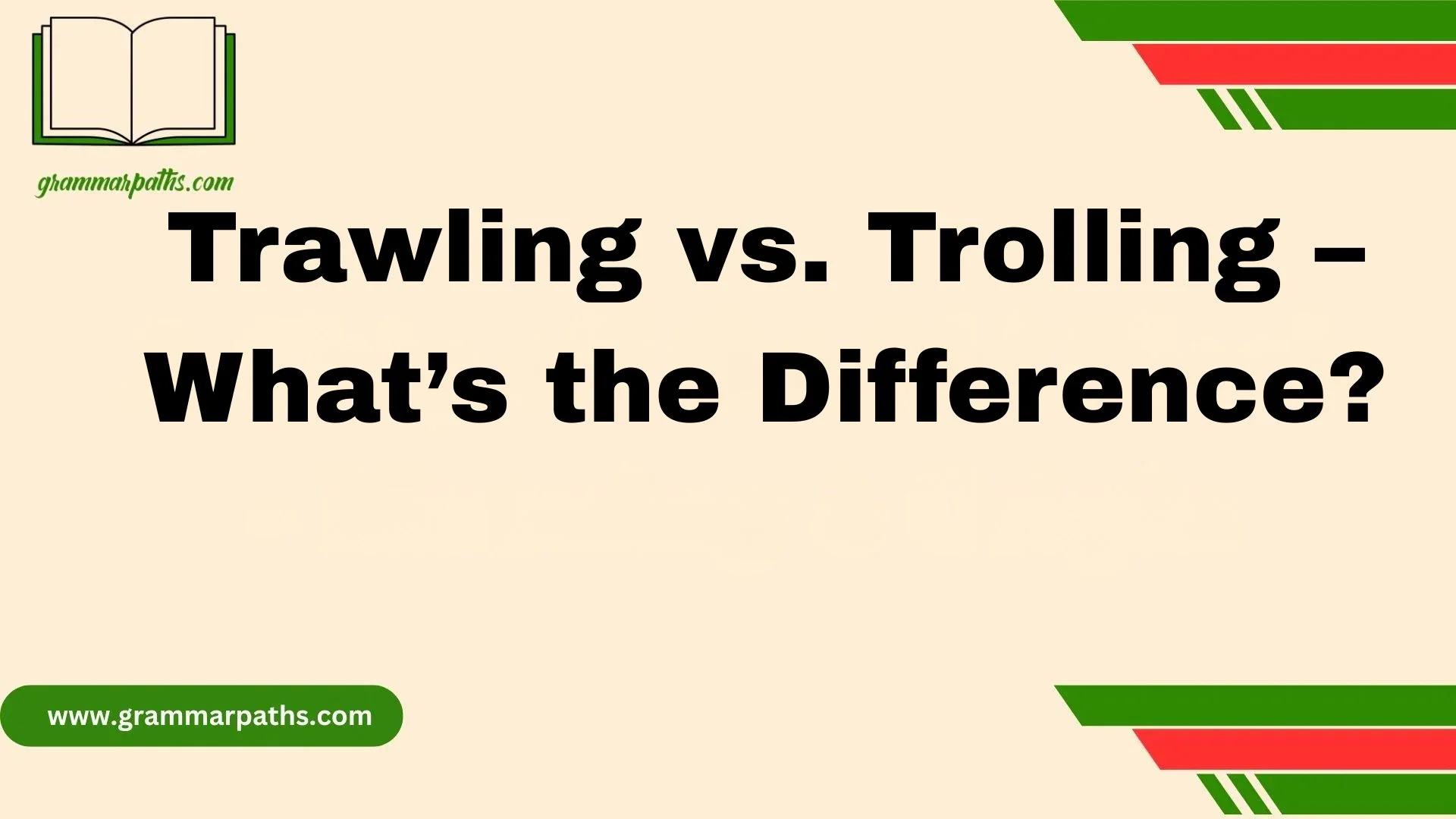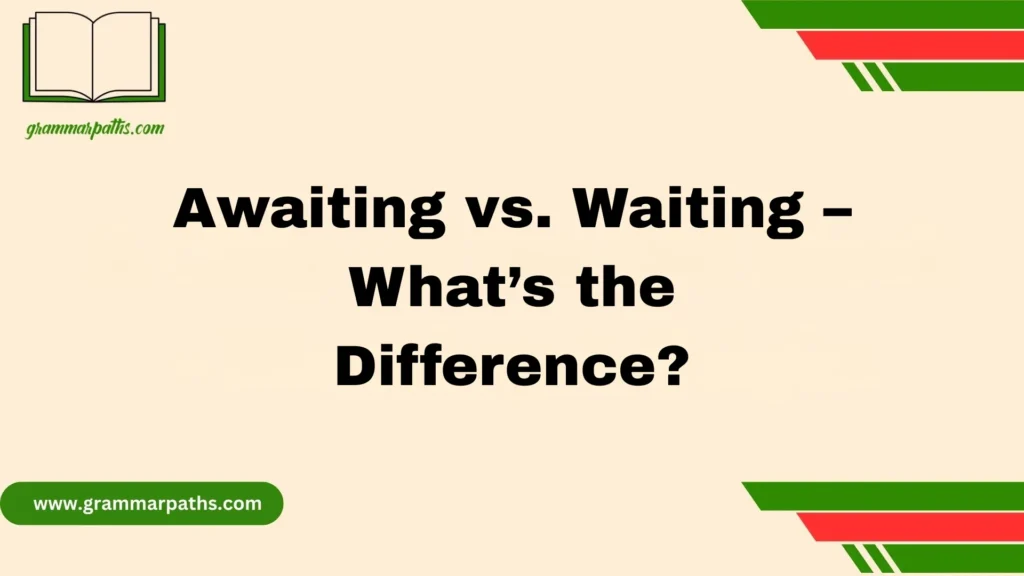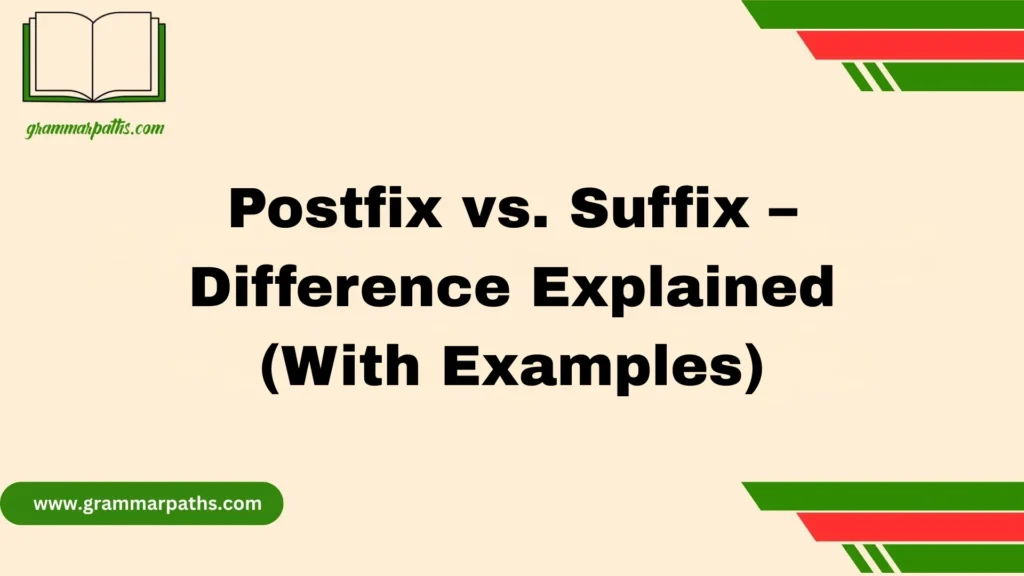When it comes to language, even the smallest spelling change can lead to confusion. Two words often mixed up are trawling and trolling. At first glance, they look almost identical, but their meanings are completely different. Understanding the difference between trawling vs. trolling is important not just for clear communication, but also for using them correctly in both fishing and digital contexts.
The word trawling usually refers to a fishing method, where large nets are dragged through the sea to catch fish. This is a term you’ll often see in discussions about commercial fishing, marine life, and environmental impact. On the other hand, trolling can mean two things: in fishing, it refers to slowly pulling a baited line behind a moving boat, and in the online world, it describes someone deliberately posting provocative comments to stir up reactions.
Because of their similar spellings and occasional overlap in fishing terminology, many people mistakenly use one for the other. This mix-up can create misunderstandings, especially when discussing online behavior versus sea fishing practices. By exploring the key contrasts between trawling and trolling, you’ll gain clarity on how and when to use each term properly.
Understanding the Basics of Trawling and Trolling
Before we dive deeper, let’s break down what each term really means.
- Trawling: A fishing method where large nets are dragged through the water or along the ocean floor to collect fish. Typically industrial, it’s one of the most widespread methods in commercial fisheries.
- Trolling: A technique where fishing lines with baited hooks or lures are drawn through the water behind a moving boat. It can be done by individuals or commercial operators targeting specific species.
Think of it this way: trawling is about volume, while trolling is about selectivity.
Historical Background
Fishing has been part of human survival for thousands of years, and both trawling and trolling have long histories.
- Trawling can be traced back to the 14th century in Europe. Early trawlers were sailboats pulling small nets. By the 19th century, steam-powered trawlers revolutionized the industry, making it possible to catch fish on a much larger scale. Today, modern trawlers can stretch hundreds of feet long and haul nets capable of capturing tons of fish in one sweep.
- Trolling, however, has roots in indigenous fishing techniques. Polynesian navigators used trolling lines with carved bone hooks to catch tuna. In the Nordic regions, handlines were dragged behind boats for centuries to catch mackerel and salmon. Over time, trolling evolved into both a commercial and sport fishing method, particularly popular in North America.
These histories show how the same goal—catching fish—developed into two very different approaches.
Trawling in Practice
Trawling is a high-capacity fishing system. Let’s look at how it works.
Types of Trawling
- Bottom trawling: Nets dragged across the seafloor to catch groundfish like cod, flounder, and haddock.
- Midwater trawling: Nets suspended in the water column targeting species like herring or mackerel.
- Pair trawling: Two boats work together, pulling one massive net between them.
- Beam trawling: A rigid beam holds the net open, usually for flatfish.
Targeted Species
- Cod
- Haddock
- Shrimp
- Flounder
- Herring
Pros and Cons
Advantages:
- Efficient for large-scale fish supply
- Supports global seafood demand
Disadvantages:
- High bycatch (non-target species)
- Damage to seabed ecosystems
- Overfishing risks
A United Nations report in 2023 estimated that bottom trawling contributes to about 25% of the world’s fish catch, but it’s also one of the most criticized practices due to environmental harm.
Trolling in Practice
Trolling looks very different. Instead of massive nets, it relies on lines and lures.
How Trolling Works
- Fishing lines with bait or artificial lures trail behind a moving boat.
- Fish are attracted to the moving bait and strike the hooks.
- Anglers reel in one fish at a time, making it selective.
Species Commonly Caught
- Salmon
- Tuna
- Mackerel
- Marlin
- Walleye
Benefits of Trolling
- Low bycatch compared to trawling
- More sustainable
- Popular as a sport due to the excitement of catching large, powerful fish
In states like Alaska, trolling is a major industry. For example, Alaska’s troll fishery for salmon provides millions of dollars in revenue while maintaining strict sustainability measures.
Techniques & Equipment Compared
The best way to see the difference is through a side-by-side comparison.
| Feature | Trawling | Trolling |
| Method | Dragging nets through water/seafloor | Pulling baited lines/lures behind boats |
| Scale | Large-scale, industrial | Small to medium, recreational & commercial |
| Targeting | Broad, catches multiple species | Selective, targets specific fish |
| Equipment | Trawlers, winches, large nets, sonar | Rods, reels, downriggers, boats, lures |
| Environmental Impact | High (bycatch, habitat destruction) | Low to moderate, minimal habitat damage |
This comparison shows why trolling is considered sustainable, while trawling is often controversial.
Environmental Impact
When we talk about fishing, sustainability is one of the biggest issues.
Trawling’s Environmental Challenges
- Bycatch: Non-targeted species like dolphins, turtles, and juvenile fish often get trapped.
- Habitat destruction: Bottom trawling disturbs coral reefs and seafloor ecosystems.
- Overfishing: Large-scale harvests reduce fish populations faster than they can recover.
A study by the Marine Conservation Institute notes that bottom trawling affects 1.9 million square miles of seafloor annually, making it one of the most damaging fishing methods worldwide.
Trolling’s Sustainability Edge
- Selective method: Fishermen can release unwanted species alive.
- Minimal habitat impact: Lines don’t drag on the seafloor.
- Recreational control: Many regions regulate trolling with catch limits.
This doesn’t mean trolling has zero impact, but its footprint is far lighter compared to trawling.
Global & Cultural Perspectives
Fishing isn’t just economics; it’s culture.
- Trawling hotspots: North Sea (UK, Norway), North Atlantic (US, Canada), and Southeast Asia. These regions depend heavily on industrial trawling for their economies.
- Trolling traditions: In Hawaii, trolling is part of indigenous fishing culture. In the Caribbean, trolling is central to both livelihood and sport tourism. Scandinavian countries also have long histories of trolling for salmon and mackerel.
Regulations Around the World
- European Union: Strict quotas and seasonal closures to manage trawling impact.
- United States: NOAA (National Oceanic and Atmospheric Administration) regulates trolling and trawling differently, often promoting trolling as a sustainable alternative.
- Pacific Islands: Many communities enforce local rules to protect traditional trolling practices.
Technological Advancements
Fishing isn’t stuck in the past. Both trawling and trolling are evolving with technology.
In Trawling
- Bycatch reduction devices (BRDs) allow non-target species to escape nets.
- GPS and sonar improve precision, reducing wasted effort.
- Eco-friendly net designs help minimize seabed damage.
In Trolling
- Electric reels assist in deep-sea trolling.
- Smart sonar systems locate fish more effectively.
- High-tech lures mimic real prey with light and vibration.
These innovations are shaping the future of fishing, balancing efficiency with sustainability.
Choosing the Right Method
So when do you trawl, and when do you troll?
- Trawling makes sense for industrial fishing fleets supplying global seafood demand. It’s about volume.
- Trolling is best for selective fishing, sport, and sustainable small-scale operations.
The right choice depends on your goal, location, and environmental responsibility.
Common Misconceptions
Here’s where things get fun—because outside of fishing, these words cause confusion.
- Online slang: “Trolling” on the internet means deliberately provoking people, not fishing.
- Mix-ups in media: News articles sometimes mislabel trawlers as trolling boats.
- Language barrier: Since both words sound similar, non-native speakers often confuse them.
Knowing the real difference avoids mix-ups between fishing conversations and internet culture.
Conclusion
Understanding the difference between trawling and trolling is essential for clear communication, whether you’re discussing fishing techniques or online behavior. While trawling involves dragging nets to catch fish, trolling can refer to either fishing with baited lines or provoking reactions online. Mixing these terms can lead to confusion, especially in professional or educational contexts. By remembering their distinct meanings, you can use them correctly and confidently in any discussion. Next time you encounter these words, you’ll know whether someone is talking about the ocean or the internet, keeping your language precise and effective.
FAQs
1. What is the main difference between trawling and trolling?
- Trawling uses large nets to catch multiple fish at once, while trolling involves using a baited line slowly pulled behind a boat or provoking reactions online.
2. Can trolling be both fishing and online activity?
- Yes, trolling refers to a fishing method as well as the act of posting provocative comments on social media or forums.
3. Is trawling harmful to the environment?
- Yes, large-scale trawling can damage sea beds and affect marine ecosystems.
4. Why do people confuse trawling and trolling?
- Their similar spelling and occasional overlap in fishing terminology cause misunderstandings.
5. Which term should I use online?
- Use trolling when referring to provoking or teasing online, not trawling.

Mia Rose is the passionate writer and founder of GrammarPaths.com, a resource dedicated to helping learners master English grammar, idioms, and writing skills with ease. With a deep love for language and years of experience in teaching and content creation, Mia simplifies complex grammar rules into clear, practical guides that readers can instantly apply.










